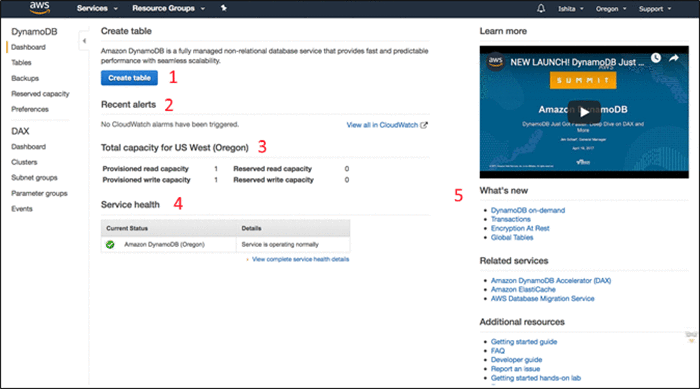AWS Database Blog
Tag: DynamoDB
Empirically test and measure queries from Amazon DynamoDB
This post describes how our team inexpensively provided simple output for the empirical analysis of Amazon DynamoDB queries. Our goal was to take a legacy DynamoDB database, transform the data in a novel way, and then store it in a new DynamoDB database. After eight months of hard work on our project, we decided to […]
Optimize Amazon DynamoDB scan latency through schema design
In this post, we demonstrate how Amazon DynamoDB table structure can affect scan performance and offer techniques for optimizing table scan times. Amazon DynamoDB is a NoSQL database that allows for a flexible schema. This means that items in the same table may differ from each other in terms of what attributes are present for each […]
How SimilarWeb moved to Amazon DynamoDB from Couchbase and saved 70%
This is a guest blog post by Doron Grinzaig, a software developer at SimilarWeb, in partnership with AWS solutions architect, Leonid Koren, and AWS senior technical account manager, Ziv Shenhav. NoSQL databases are a great fit for many modern mobile, web, and gaming applications that require scalable, flexible, and highly functional databases. However, NoSQL databases by […]
Amazon DynamoDB: Ad tech use cases and design patterns
Advertising technology (ad tech) companies use Amazon DynamoDB to store various kinds of marketing data, such as user profiles, user events, clicks, and visited links. Some of the uses include real-time bidding (RTB), ad targeting, and attribution. In this blog post, I identify the most common use cases and design patterns of ad tech companies […]
Amazon DynamoDB: Gaming use cases and design patterns
Gaming companies use Amazon DynamoDB in all parts of game platforms, including game state, player data, session history, and leaderboards. The main benefits that these companies get from DynamoDB are its ability to scale reliably to millions of concurrent users and requests while ensuring consistently low latency—measured in single-digit milliseconds. In addition, as a fully […]
Understanding Amazon DynamoDB encryption by using AWS Key Management Service and analysis of API calls with Amazon Athena
As applications evolve to be more scalable for the web, customers are adopting flexible data structures and database engines for their use cases. Using NoSQL data stores has become increasing popular because of NoSQL’s flexible data model for building modern applications. Amazon DynamoDB is a fast and flexible NoSQL database service that can provide consistent […]
Tuning AWS Java SDK HTTP request settings for latency-aware Amazon DynamoDB applications
October 2024: This post was reviewed for accuracy. Additional guidance was added about the trade-offs between high and low timeout settings. Amazon DynamoDB is a NoSQL cloud database service that is designed to provide low-latency and high-throughput performance for applications and services running at scale. Example use cases include: Massively multiplayer online games (MMOGs) Virtual […]
How to design Amazon DynamoDB global secondary indexes
Back in college, I created entity-relationship diagrams to model the system requirements of a relational database. The process involved finding all of the entities of the software system and defining relationships among them. I then modeled the relationships and entities into database tables before deciding which queries the database had to support. This method of […]
Everything you ever wanted to know about the Amazon DynamoDB console but were afraid to ask: A detailed walkthrough
Since its release in 2012, Amazon DynamoDB has become a fully managed, multi-region, multimaster database service designed to deliver fast and predictable performance at any scale. DynamoDB is a NoSQL database that provides three options for performing operations: a web-based console, the AWS Command Line Interface (CLI), and a set of SDKs for a number […]
Design patterns for high-volume, time-series data in Amazon DynamoDB
Time-series data shows a pattern of change over time. For example, you might have a fleet of Internet of Things (IoT) devices that record environmental data through their sensors, as shown in the following example graph. This data could include temperature, pressure, humidity, and other environmental variables. Because each IoT device tracks these values over […]









